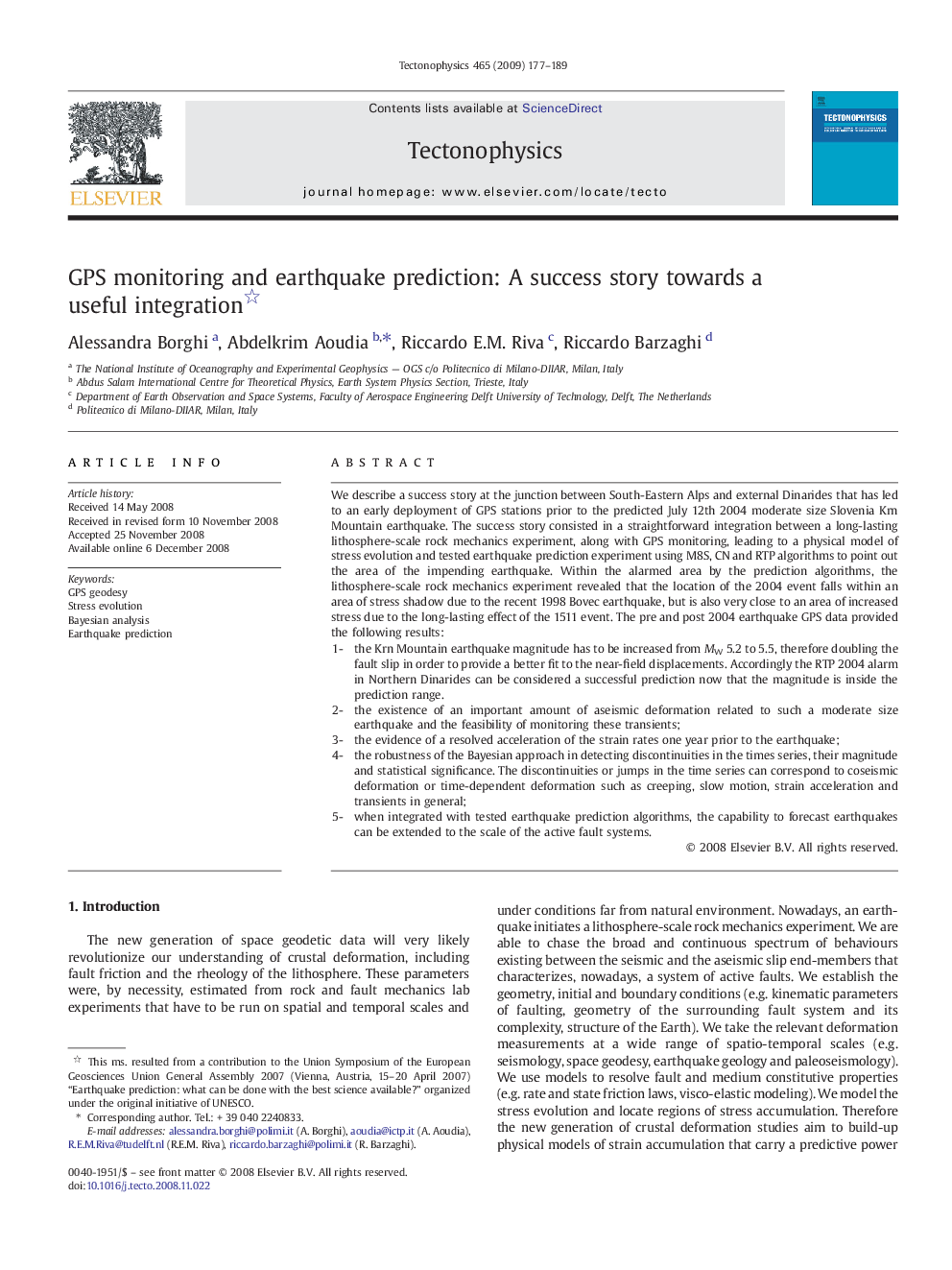| کد مقاله | کد نشریه | سال انتشار | مقاله انگلیسی | نسخه تمام متن |
|---|---|---|---|---|
| 4694366 | 1636900 | 2009 | 13 صفحه PDF | دانلود رایگان |

We describe a success story at the junction between South-Eastern Alps and external Dinarides that has led to an early deployment of GPS stations prior to the predicted July 12th 2004 moderate size Slovenia Krn Mountain earthquake. The success story consisted in a straightforward integration between a long-lasting lithosphere-scale rock mechanics experiment, along with GPS monitoring, leading to a physical model of stress evolution and tested earthquake prediction experiment using M8S, CN and RTP algorithms to point out the area of the impending earthquake. Within the alarmed area by the prediction algorithms, the lithosphere-scale rock mechanics experiment revealed that the location of the 2004 event falls within an area of stress shadow due to the recent 1998 Bovec earthquake, but is also very close to an area of increased stress due to the long-lasting effect of the 1511 event. The pre and post 2004 earthquake GPS data provided the following results:1-the Krn Mountain earthquake magnitude has to be increased from MW 5.2 to 5.5, therefore doubling the fault slip in order to provide a better fit to the near-field displacements. Accordingly the RTP 2004 alarm in Northern Dinarides can be considered a successful prediction now that the magnitude is inside the prediction range.2-the existence of an important amount of aseismic deformation related to such a moderate size earthquake and the feasibility of monitoring these transients;3-the evidence of a resolved acceleration of the strain rates one year prior to the earthquake;4-the robustness of the Bayesian approach in detecting discontinuities in the times series, their magnitude and statistical significance. The discontinuities or jumps in the time series can correspond to coseismic deformation or time-dependent deformation such as creeping, slow motion, strain acceleration and transients in general;5-when integrated with tested earthquake prediction algorithms, the capability to forecast earthquakes can be extended to the scale of the active fault systems.
Journal: Tectonophysics - Volume 465, Issues 1–4, 20 February 2009, Pages 177–189